
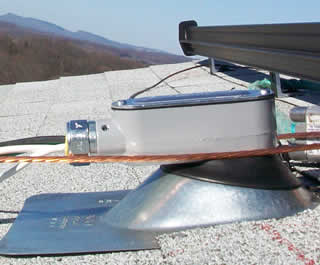
Solar power makes its way down.
Since many installations are on top of roofs, there has to be a way to get the power into the house. This is one of the most waterproof solutions.
Using a flashing underneath the array, with a rubber sealed part snug around a conduit body, the wires are in EMT conduit directly from the point of entry.
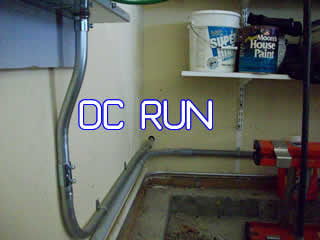
The End of the DC Run.
The EMT conduit, which is rigid and unbreakable metal pipe, ends its run through the house at the point of the inverter.
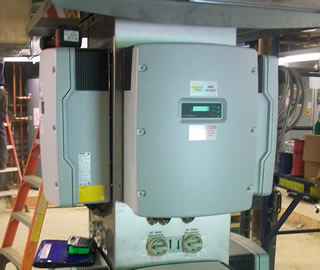
Where all the wires connect.
The wires from the panels on the roof go directly to a device known as an inverter. In this image, seen at the John Dorr Nature Center utility room, you see several inverters mounted on a tower.
In a residential installation, you may only see just one of these devices. In mid-sized commercial installations it is commonplace to use multiple inverters that could also be used on single-family home applications.

They get hot in the sun!
Since the frames of the panels are aluminum, which absorbs heat, they must be kept in the shade during hot summer installations. Or else, they are literally too hot to carry onto the roof.
On the backs of the panels there are two wires and a junction box. One wire is positive and the other is negative in its polarity. There is also a label with the power production on the backs of the panels.

How the panels are fastened to the roof.
There are many different ways to mount solar panels onto a roof. In this picture, you see a mounting system known as Unirac Sunframe. The rails are fastened to the roof by bolts that sink directly into the rafter structure underneath the shingles and plywood. Those lag bolts are covered with flashings that go underneath the asphalt shingles. The panels sit inside the rails and are covered on the edges with a strip of metal that fastens to keep them from moving.
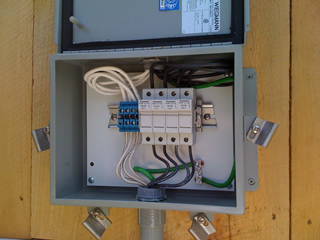
A Brand New One.
This combiner box has just been built. The white wires are the positives from the panels, since it is a positively grounded system. The green wire is the ground, or path to earth. And the black wires are the negatives. The white blocks on the right are fuse holders, and the blue terminals on the left are just splices. The wires coming from the top conduit are USE-2, which is a roof wire. The wires going into the conduit are THWN, which is suitable for indoor and inside conduit.
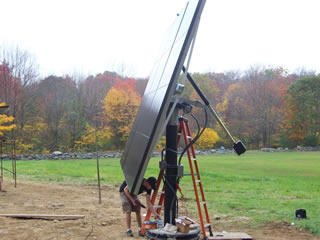
Moves with the sun.
A light sensor works together with a small motor to produce a dual-axis tracking effect. Because of the array's ability to match the angle of the sun, it gets more direct sunlight, and as a result, produces more power.
Trackers work best in areas of high latitude, where there is usually clear skies.
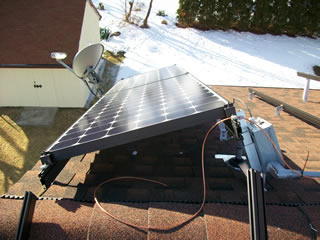
These face south, on an east-facing roof.
It is possible to tilt the panels in the direction of the sun, using legs which are taller in the back, and shorter in the front. In this example, the roof you are looking at actually faces west. But the tilts the panels are on make it face south.
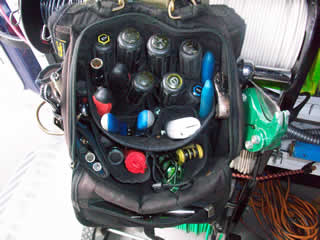
A solar electrician's handtools.
These are generally a mix of electrical and roofing tools. If you look really carefully, you will see a prybar on the right, used for getting underneath shingles for flashings. There is also an allen key, wire strippers, diagonal cutters, pvc cutters, and a level. As well as linesman pliers, and a wide variety of nut drivers and screwdrivers.

But make sure that you're harnessed. For sure.
Most solar panels need to pass a variety of tests to determine their dexterity in the outdoor environment. So, yes they can support the weight of an individual.
That doesn't mean you can breakdance on them. If they're wet, they can be extremely slippery. Harnessing is a must-do as a solar electrician.